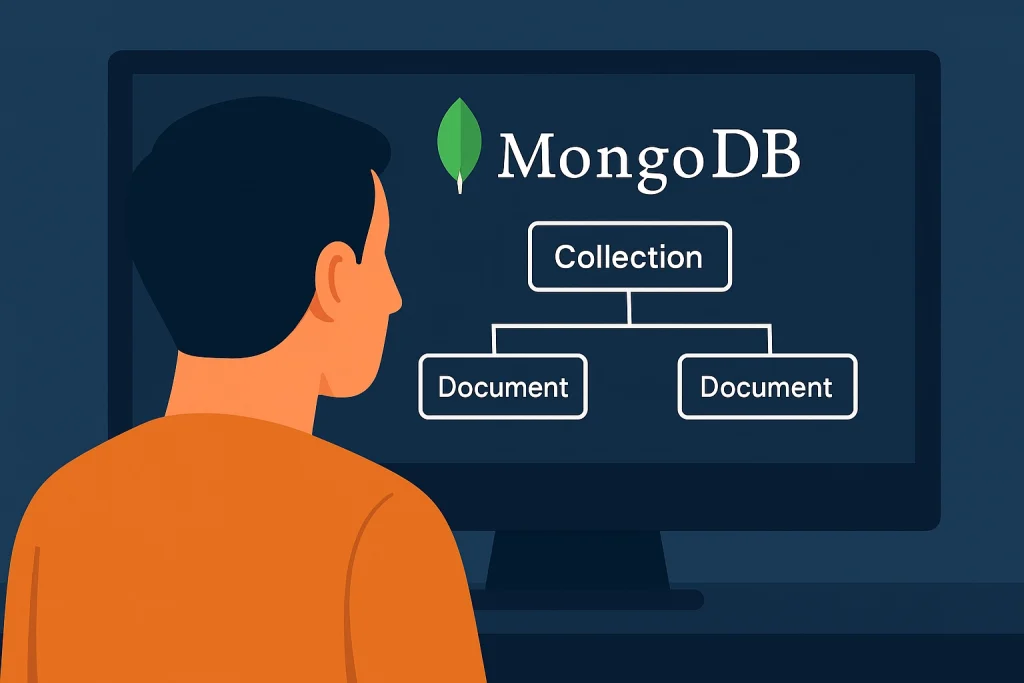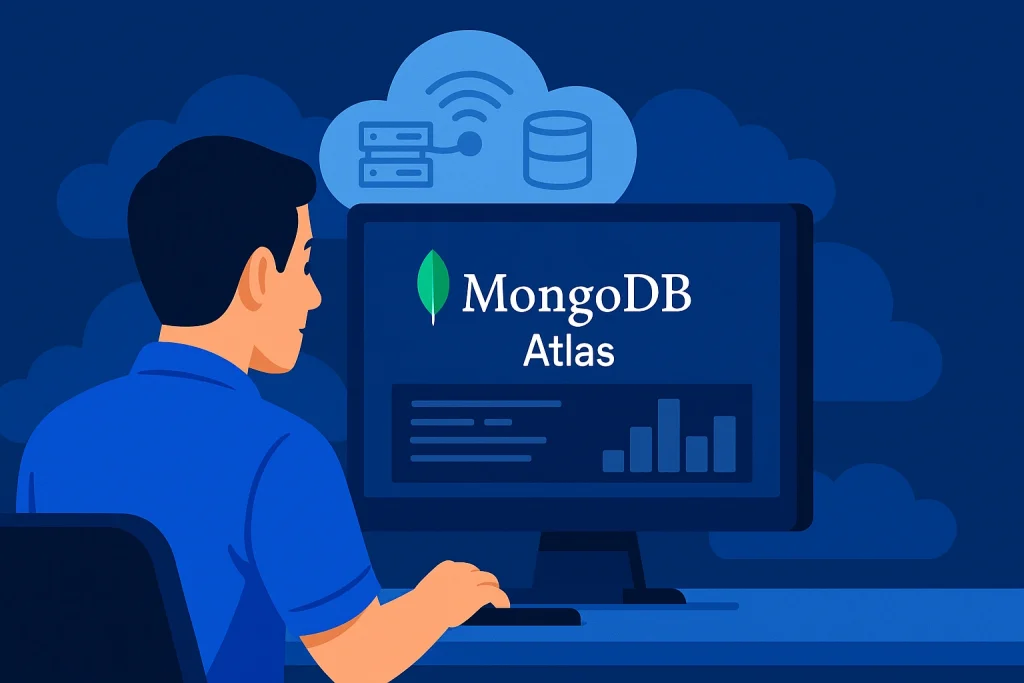If you’ve been following the latest technology trends, you’ve probably heard developers, startups, and even big corporations asking: It’s not just another buzzword in the world of databases. Instead, it has become a cornerstone of how modern applications handle the explosion of digital data.
When I first encountered MongoDB, I was working on a side project with messy, ever-changing data. Traditional databases felt rigid, and I was constantly battling schemas. A friend suggested it, and it instantly felt like I had been handed a flexible notebook where I could jot down data without worrying about strict rules. That experience showed me why so many developers are turning to this solution today.
What is MongoDB?

Think of it as a flexible library where every book can have a different structure but still makes sense when shelved together. That’s the magic of MongoDB—it organizes chaos into order. Developers don’t need to fight with schemas; instead, they focus on solving problems. It’s data management made intuitive.
At its simplest, MongoDB is a NoSQL database designed to store and manage unstructured or semi-structured data. Unlike traditional relational databases that rely on rows and tables, it uses flexible, JSON-like documents. This means developers can store data in a way that mirrors real-world objects more closely.
It is straightforward: it’s a modern database built for speed, scalability, and flexibility. Whether you’re building a small web app or managing enterprise-level analytics, MongoDB adapts seamlessly.
Breaking Down MongoDB
So, how does it stand out? Let’s break it into digestible parts:
Documents
Rather than using tables, MongoDB stores data as documents in BSON (Binary JSON) format. Each document contains key-value pairs that can hold structured or unstructured data. For example, a user profile document can include a name, email, preferences, and even embedded data like a list of recent purchases—all in one place. This makes it incredibly versatile and ideal for applications that demand dynamic, nested, and evolving data structures.
Collections
Documents are grouped into collections, which function like folders that organize related files. A collection might store all user profiles, product catalogs, or blog posts. By grouping similar documents together, it ensures developers can quickly retrieve related data without sifting through unrelated content.
Schema-less
Fields can be added, modified, or removed on the fly as your application grows and changes. For startups and fast-moving projects, this flexibility is invaluable—it allows developers to iterate quickly without needing to redesign the entire database every time requirements shift.
Indexes
These function like the index of a book, pointing directly to the location of needed information instead of flipping through every page. Indexing makes searches and queries lightning-fast, whether you’re filtering users by location, sorting orders by date, or scanning a catalog for a product name.
Replication & Sharding
One of MongoDB’s biggest strengths is its ability to scale. Through replication, data is duplicated across multiple servers, ensuring high availability and disaster recovery. If one server goes down, another instantly steps in to keep the system running. Meanwhile, sharding distributes large datasets across multiple machines, preventing bottlenecks and supporting massive workloads.
History of MongoDB
MongoDB’s journey reflects the story of modern software—born from frustration, fueled by innovation, and scaled by necessity. What began in as an experiment soon turned into an open-source revolution. it was clear MongoDB had become a cornerstone of digital infrastructure. We need to step back and look at its origins. It was developed in 2007 by Dwight Merriman, Eliot Horowitz, and Kevin Ryan, founders of the company 10gen. Their vision was to create a database that could handle the scale and speed demands of modern internet applications.
Here’s a timeline of its evolution:
| Year | Milestone |
|---|---|
| 2007 | MongoDB created by 10gen (now MongoDB Inc.) |
| 2009 | First open-source release of MongoDB |
| 2013 | Gained popularity among startups and big companies alike |
| 2017 | MongoDB went public on NASDAQ |
| 2020s | Widely adopted as one of the most popular NoSQL databases globally |
Types of MongoDB

Community Edition
The free, open-source version available to anyone. Perfect for personal projects, learning, and startups experimenting with NoSQL.
Enterprise Edition
A premium version offering advanced security, monitoring, and integration features. Best for businesses that need extra compliance and support.
MongoDB Atlas
A fully managed cloud service where it handles hosting, scaling, and security. It’s ideal for teams that want to focus on building apps rather than managing infrastructure.
MongoDB Realm
A platform for mobile developers, offering real-time synchronization and offline-first support. Think of it as extending it’s power into smartphones and IoT devices.
Each type reflects it’s adaptability. Whether you’re an indie developer or a Fortune 500 company, there’s an edition that fits your needs.
How Does MongoDB Work?
Now that we’ve defined it, let’s see how it functions:
- Data Insertion: Developers insert data as JSON-like documents into collections.
- Querying: powerful query language to filter, sort, or aggregate data. For example, find all customers in New York who ordered last week.
- Indexing: Indexes speed up searches so queries return quickly, even with millions of documents.
- Replication: it copies data across servers to ensure redundancy and reliability.
- Sharding: For massive datasets, it distributes information across multiple machines while maintaining seamless access.
This step-by-step process allows it to balance flexibility with performance. It’s why companies like eBay, Uber, and Adobe trust it for mission-critical systems.
Pros & Cons
Before diving all in, it’s important to weigh the strengths and limitations.
| Pros | Cons |
|---|---|
| Flexible schema | Higher memory usage |
| Scales horizontally | Lacks multi-table joins |
| Handles unstructured data | Learning curve for SQL users |
| Strong community support | May require more storage |
| Cloud-ready with Atlas | Not always ideal for financial data |
It shines in flexibility and scalability but isn’t the best fit for every scenario.
Uses of MongoDB
In the real world, Let’s explore where it’s making an impact.
E-commerce
Retailers use it to manage product catalogs that vary widely in attributes. Adding a new category of product doesn’t require reworking the entire database.
Healthcare
Hospitals use it to store patient records, imaging data, and appointment schedules. Its ability to manage diverse data makes it ideal for healthcare applications.
Social Media
Platforms use it to track user activity, posts, and real-time interactions. The schema-less design adapts as new features roll out.
Finance
While not always used for transactions, it also helps financial companies with analytics, fraud detection, and customer personalization.
Gaming
Game developers use it to manage player profiles, leaderboards, and in-game transactions, often in real time.
In all these industries, MongoDB helps bridge the gap between raw data and meaningful action.
Resources
- MongoDB.com: Official Documentation.
- W3Schools: MongoDB Tutorial.
- TutorialsPoint: Learn MongoDB.
- GeeksforGeeks: MongoDB Basics.
- Medium: Real-World Applications of MongoDB.
